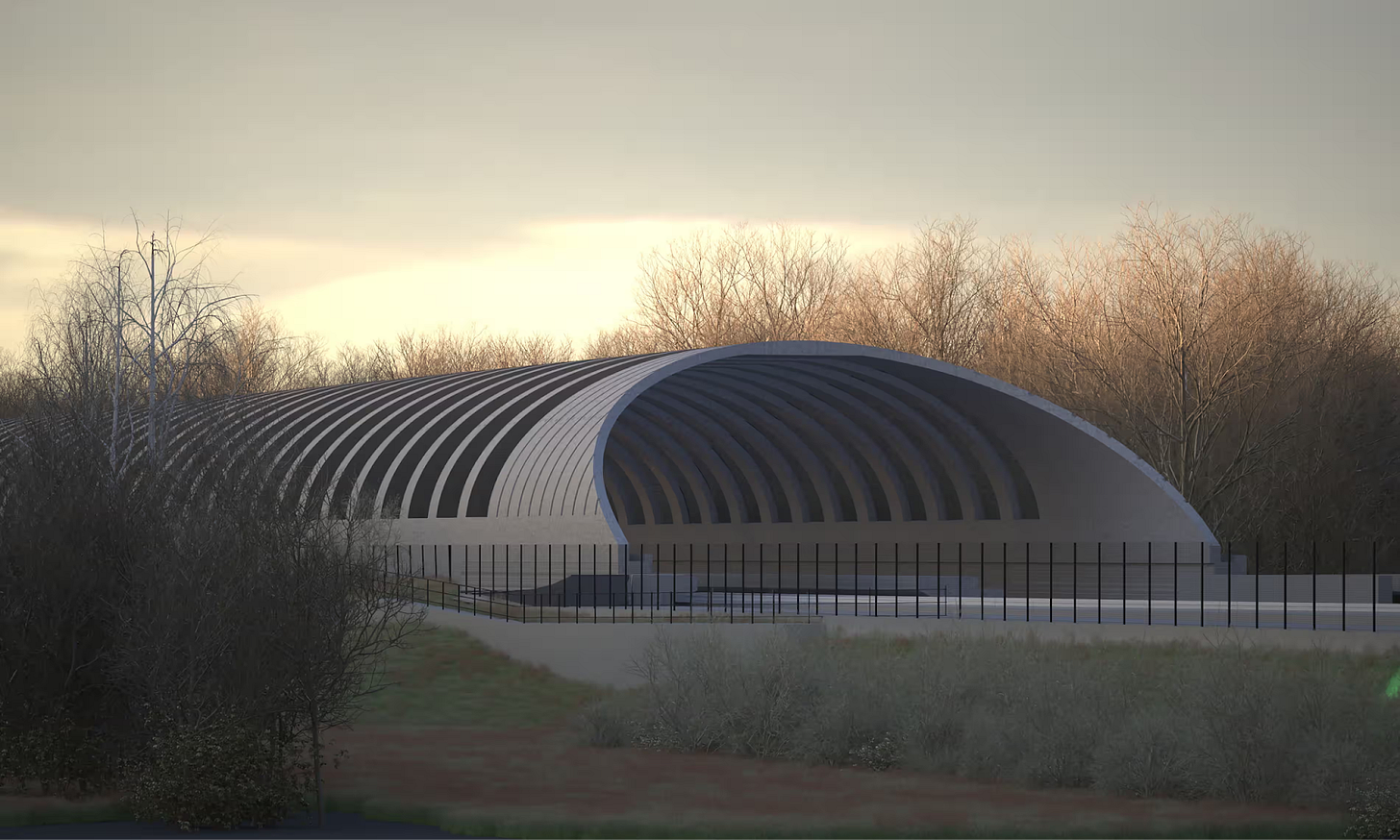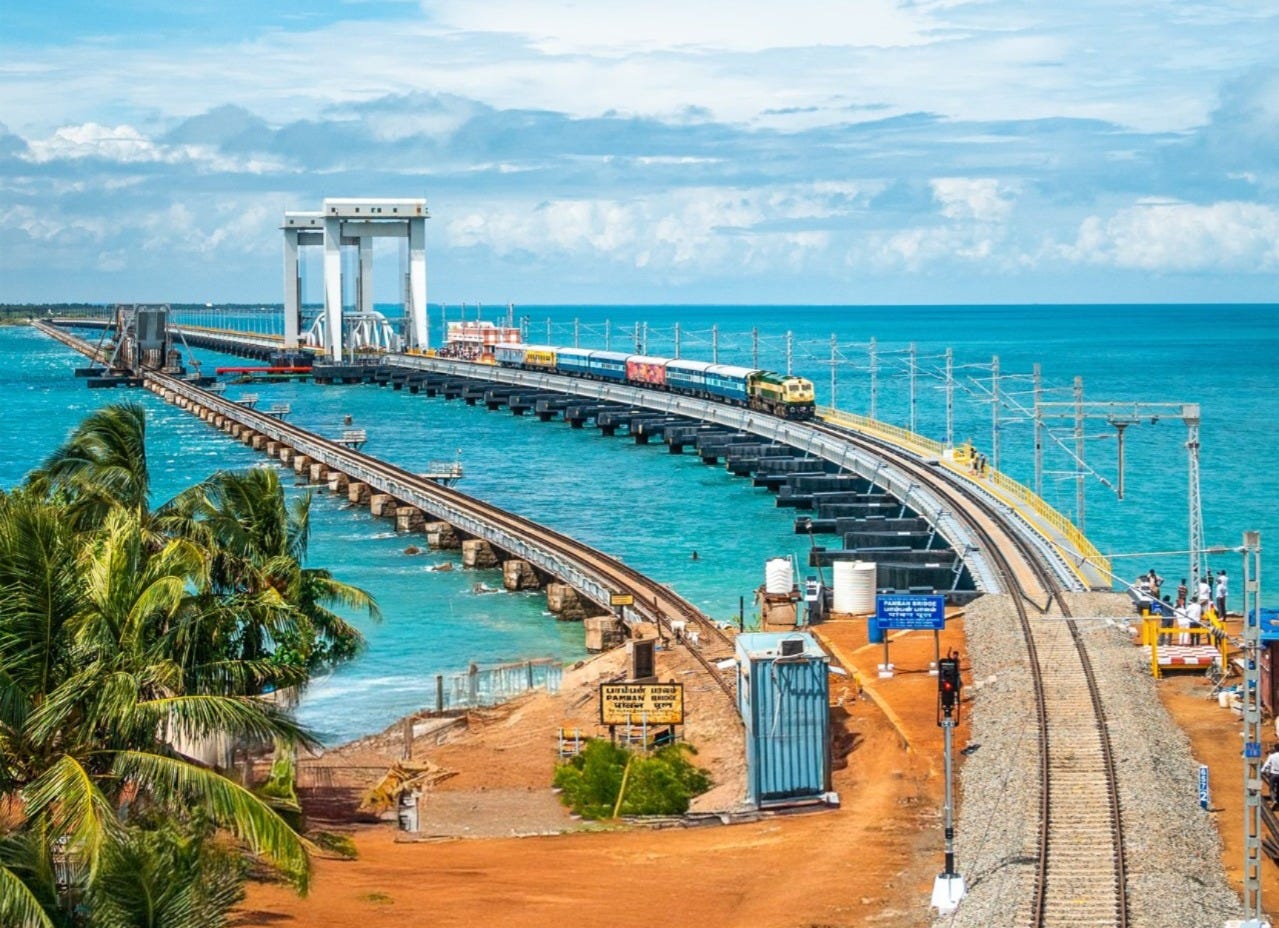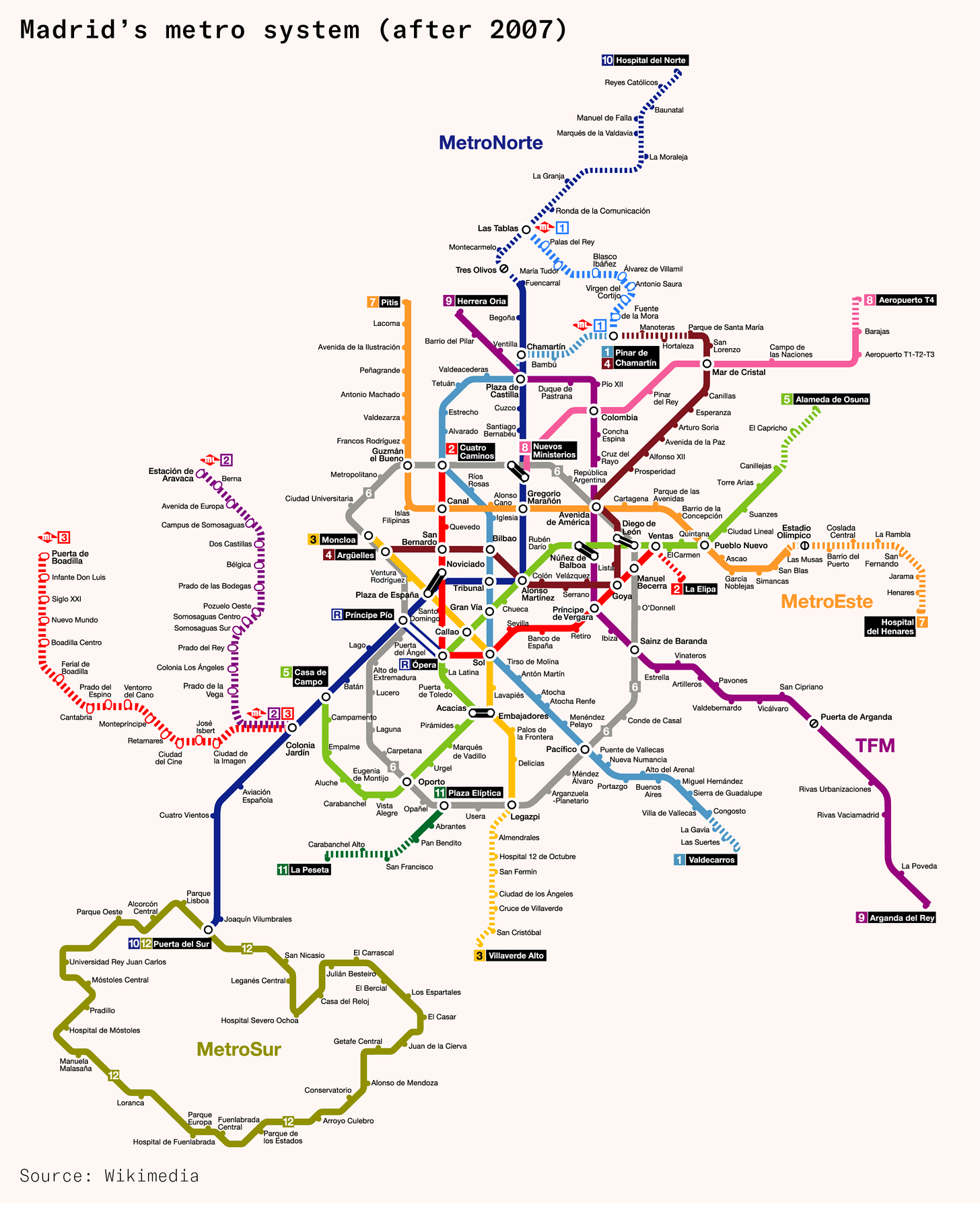Three percent more Monaco
Plus: high speed rail in Vietnam, India's first vertical lift sea bridge, and a £100 million bat tunnel.
This week’s Links in Progress rounds up new developments in infrastructure around the world. You can opt out of Links in Progress here.
Planes
1. A new airport has opened in Greenland’s capital of Nuuk. With a longer runway (2,200 meters, replacing the older 950-meter runway), larger planes that previously had to use former US military bases on the territory will now be able to fly directly. Direct flights from New Jersey are launching in June, making the territory even more appealing to those searching for land to create a new city-state.
Trains
2. Vietnam has granted approval to a new $67 billion high speed line between Hanoi and Ho Chi Minh City (Saigon). The line will be one of the most ambitious high speed projects outside of China, covering a total distance of 1,541 kilometers (957 miles: for comparison, California High Speed Rail Phase 1 is ~500 miles) at a cost of ~70 million USD per mile. Construction is planned to commence in 2027, with the first services to run in 2035.
3. The UK’s High Speed 2 rail project spent £100 million GBP ($127 million USD) on a one-kilometre-long steel mesh over a section of the line to protect nearby bats. The chairman of the project also revealed that 8,276 separate consents were required in order to proceed with construction of the line, which runs from London to Birmingham. It turns out that the bats aren’t even particularly rare.

4. High speed rail may also be coming to Australia: drilling has begun on the New South Wales coast to identify the best routing for an initial line, planned to run between Sydney and Newcastle. Construction contracts for the first stage will launch in 2027 with services commencing around a decade later. The Australian Government has also approved the next stage of the existing Inland Rail project, with the goal of building a dedicated freight railway between Melbourne and Brisbane.
5. Ghana has opened a new railway running from Tema to Mpakadan, as part of an eventual 1,200-kilometer line that will link Ouagadougou, the capital of Burkina Faso, with the Ghanaian port of Tema. Built at a cost of $447 million USD, the 97-kilometer (~60 miles) stretch comes to around $7.5 million USD per mile and will support freight movements between inland territories and the coast. The Ghanaian government plans to develop around 4,000 km of railways by 2030.
6. The first three lines of Riyadh’s new metro network opened on the 1st December, with another two following on the 15th December. The sixth line of the initial network will open in early January. The six automated metro lines, with a total length of 176 kilometres (~110 miles) and 85 stations, have been constructed in just a decade at a cost of $22.5 billion USD (~$205 million per mile). The project has included some novel financing methods, including the sale of station naming rights creating destinations such as the ‘SAB Bank’ and ‘STC’ (after the Saudi Telecom Company) stations.
7. The French government has announced a plan to build 22 new intermodal rail freight terminals (where containers can be moved between trains and lorries) across the country, as well as expanding several existing ones. The strategy and new investments will contribute to the French’s Government’s 2019 ambition to double rail’s share of the freight market to 18% by 2030.
8. Switzerland and Germany have agreed to jointly invest in upgrading a cross-border rail line to relieve congestion on existing routes, and decrease journey times. The 430 million CHF investment will electrify the 75 kilometre (~47 miles, ~$10 million USD per mile) route between Basel and Erzingen, as well as extending and raising platforms, installing noise barriers, and renewing electrical systems to support a more intensive rail service.
9. In the twelve years from 1995, Madrid tripled the size of its metro at one of the lowest per-km construction costs in the developed world, thanks to a unique model of infrastructure planning, financing, and construction. Ben Hopkinson wrote for Works in Progress about what lessons can be learned from the Madrid-method for other cities looking to build at scale.
Automobiles
10. After years of wrangling, New York City’s road congestion pricing will finally go live on Manhattan’s highways on January 5th. The new $9 a day toll is less than the previously planned $15 charge, and revenues will be used to support the Metropolitan Transportation Authority to deliver its capital plan. New York State Law requires around $15 billion to be raised from tolls towards the capital plan, and the charges are expected to climb to $12 a day in 2028 before reaching $15 in 2031.
Boats
11. Cambodia is building a 180-kilometer (112-mile) canal connecting the Mekong Delta in the North with its southern coast, enabling ships and freighters to navigate from the capital to the sea without traversing through neighbouring Vietnam. At a price of $1.7 billion (~$15 million per mile, ~a fifth of the cost per mile of France’s new canal), the Funan Techo Canal’s cost is equivalent to around four percent of the country’s GDP. However, the project has faced concerns with funding, and of environmental effects on the already-fragile Mekong water system.

12. Operational tests have begun on India’s New Pamban Bridge, the first vertical lift sea bridge on the subcontinent, where a horizontal bridge span rises vertically, severing the bridge, but allowing boats to pass underneath. The new bridge and the railway it carries cost 535 crore INR (~$64 million USD) for its 2.05km length (~$49 million USD per mile) and a lifting span that gives ships a clearance of 22m above sea level. The project has not been without controversy, with accusations of safety lapses throughout construction.
Everything else
13. Monaco, one of the smallest territories in the world, is reclaiming land from the sea to create a new district. This is expected to cost around two billion euro: half for the reclamation, and half for the development that sits on top of it. The six-hectare new district of Mareterra with its 110 apartments, 10 houses, and 4 villas (costing around $200 million each) will grow Monaco’s area by around three percent. With prices per square metre of up to €120,000 EUR (more than $12,500 USD per square foot), Mareterra will be home to some of the most expensive real estate in the world.
14. In Athens, the regeneration of the former Ellinikon airport site, part of which temporarily supported the 2004 Summer Olympics, is delivering 2500 hectares of new urban space and 240 acres of parkland. The site will be home to around 30,000 people, including the Riviera Tower, a 170 home tower that at 198 meters tall is almost double the height of Greece’s current record holder. The project is an example for other cities looking to maximise the utility of inner city land by moving industrial and logistical sites further out.
15. The UK’s Department for Energy and Net Zero and Westminster City Council have jointly announced plans for a new district heating network in the heart of the British capital. With up to £1 billion GBP ($1.27 billion USD) to be invested between now and 2050, the ‘South Westminster Area Network’ will be one of the largest in the UK, with ambitions to not only service homes and businesses, but also key landmarks including the Houses of Parliament (built in the 1800s) and the National Gallery. Heat networks can provide hot water and heating 40% cheaper than heat pumps can by generating heat at scale and using waste heat from sources such as the River Thames and the London Underground. An article in Works in Progress explained how they work.
16. Developers in San Francisco (home to some of the highest land values in the US) are turning to slimmer building designs to take advantage of looser building regulations. Buildings of up to 73 metres in height (240 feet) are being proposed on single lots of just 7.5-10.5 metres width (25-35 feet). The greater development permitted on single lots supports home construction by reducing the need for developers to assemble larger plots. These developments are coming forwards as San Francisco enters the final stages of a project to rewrite zoning rules.





